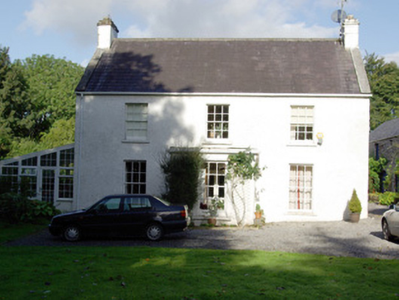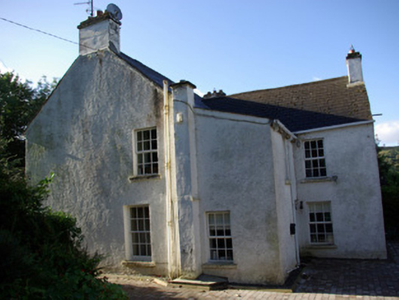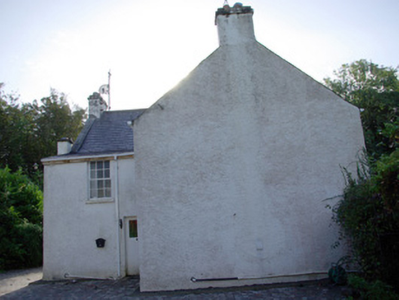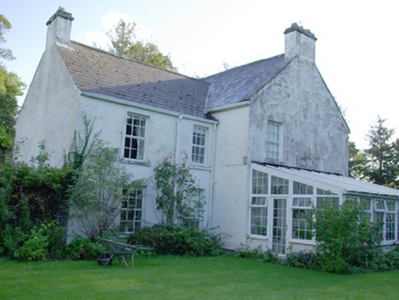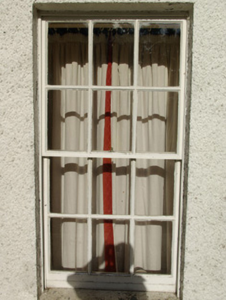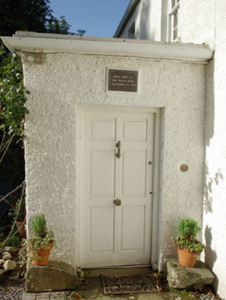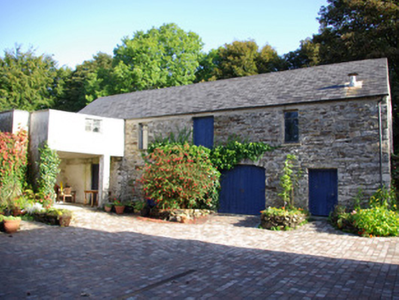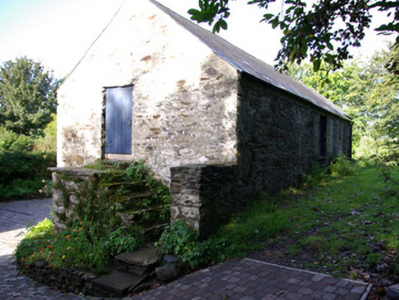Survey Data
Reg No
40906808
Rating
Regional
Categories of Special Interest
Architectural, Historical, Social
Original Use
Rectory/glebe/vicarage/curate's house
In Use As
House
Date
1790 - 1800
Coordinates
204861, 397517
Date Recorded
18/09/2007
Date Updated
--/--/--
Description
Detached three-bay two-storey former Church of Ireland rectory, built c. 1799, having single-bay single-storey flat-roofed entrance porch to the centre of the main elevation (south-east) and two-bay two-storey return to the rear (north-west). Now in use as a private house with modern glazed conservatory attached to the south-west gable end and modern two-storey extension to the north-west side of return. Pitched natural slate roof with clay ridge tiles, raised rendered verges and smooth rendered chimneystacks to the gable ends (north-east and south-west). Some surviving sections of cast-iron rainwater goods. Roughcast rendered walls. Plaque to north-west side elevation of porch commemorating birthplace of Isaac Butt. Square-headed window openings with cut stone sills and with six-over-six pane timber sliding sash windows; some replacement fittings to other openings. Square-headed door opening to the north-west side elevation of porch having replacement timber door. Set back from road in mature grounds to the west/north-west of Ballybofey, and to the south-east of Cloghan. Associated church (see RMP DG068-023001-), built or rebuilt c. 1680, ‘restored’ in 1733, now ruinous, and graveyard adjacent to the south/south-east. Detached four-bay single-storey outbuilding to the rear (north-west) having external flight of stone steps to the south-east gable end giving access to doorway at first floor level, pitched artificial slate roof, rubble stone walls (formerly rendered), square-headed window openings with stone sills and replacement fittings, square-headed doorways with battened timber doors, and with segmental-headed carriage-arch to the main elevation (south-west) having rubble stone voussoirs and battened timber double-doors.
Appraisal
This attractive former Church of Ireland rectory, of balanced late Georgian portions, retains much of its original form and architectural character despite some modern additions. This building is an example of the language of classical architecture stripped to its barest fundamental elements, which creates a fine dwelling in a subtle style. The three-bay two-storey form is typical of Church of Ireland rectory buildings (particularly those built by the Board of First Fruits), and many middle class gentleman's residences, dating from the late-eighteenth and the early-to-mid nineteenth century. Its visual expression and integrity is enhanced by salient fabric such as timber sash windows and natural slate roof. Lewis (1837) records that this building was originally built in 1799 using a ‘gift of £450 and a loan of £50 from the late Board of First Fruits’. It was originally constructed to serve the now ruinous church (see RMP DG068-023001-) that lies adjacent to the south. This church was built or rebuilt c. 1689, and ‘restored’ in 1733. It remained in use as the Church of Ireland church until the construction of the new parish church at Glenmore (see 40907702) to the south-east in 1877-79. This former Church of Ireland church is of significance as the birthplace of Isaac Butt (1813-79), an historical figure of national significance. Butt’s father (Revd. Robert Butt) was rector of the parish during the early-to-mid nineteenth century. Butt was a barrister and politician who served as an MP for Cork and Limerick, and is regarded as the founder of the Home Rule Movement. He is buried at the Church of Ireland church (see 40838040) at nearby Stranorlar to the east/south-east. This rectory was later the home of the Revd. Thomas Ramsey in 1846, the Revd. Albert Burnett in 1881, and probably the Revd. Arthur McQuade in 1894 (All Slater’s Directory). This building is an integral element of the built heritage and social history of the local area. The simple rubble stone outbuilding to the rear adds to the setting and context, and completes this composition.

